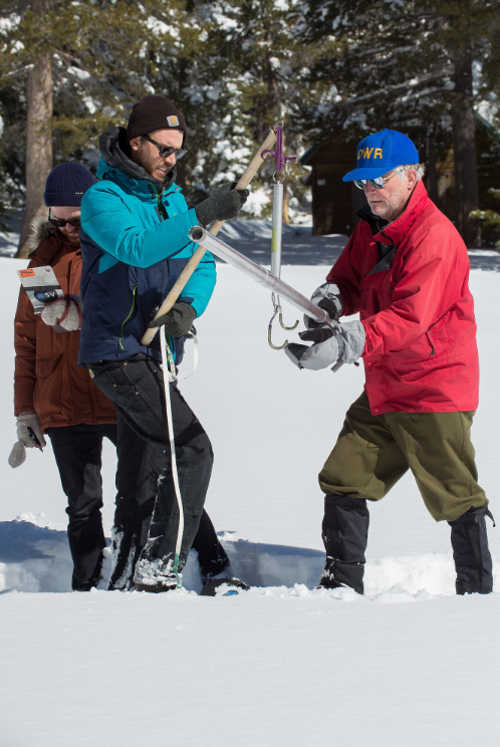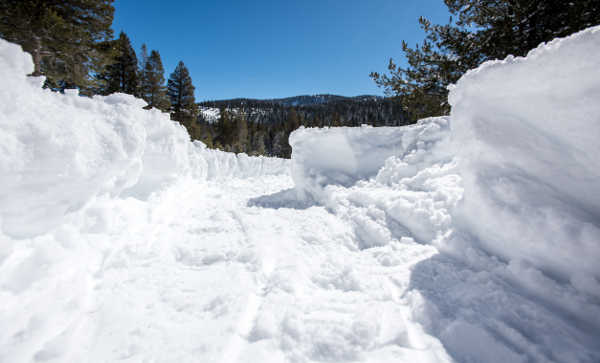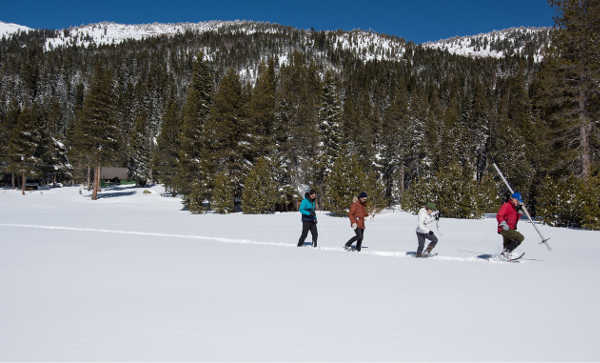
NORTHERN CALIFORNIA – Monday’s snow survey at Phillips Station tells a more positive story than it did before the recent storm, but totals are still well below average, officials reported.
Despite the recent late-winter storm that brought much-needed snow to the Sierra Nevada, the snow water equivalent is 9.4 inches, which is 39 percent of normal for early March.
“California has unquestionably experienced a dry winter this year, with a near-record dry February,” said Department of Water Resources Director Karla Nemeth. “While we’re happy to kick off March with this healthy storm, the variability of this winter’s weather patterns underscores the importance of continued conservation and the ongoing need to strengthen California’s water supply reliability for our people, our economy, and our environment.”
The snow survey conducted today by Frank Gehrke, chief of the California Cooperative Snow Surveys Program, was the second measurement at Phillips Station for this snow survey period.
On Feb. 28, Gehrke conducted the official snow survey of record, which found a snow water equivalent of 1.7 inches, or just 7 percent of average for that time of year as recorded since 1964.
Given the forecasted storm, Gehrke conducted a second measurement on March 5 to record its impact, which yielded a 32 percentage-point increase in snow water equivalent over the previous week.
Snow water equivalent is the amount of water contained within the snowpack. The snowpack – often called California’s “frozen reservoir “– normally provides about a third of the water for California’s farms and communities as it melts in the spring and summer and fills reservoirs and rivers.
“As indicated by the increase in snow depth and water content from last week to today, this recent storm provided a much-needed boost to our snowpack,” said Gehrke. “Today’s measurements are greater than what we found last week, but not enough to bring the state up to an average year.”
In addition to the manual surveys conducted at Phillips, DWR also logs electronic readings from 103 stations scattered throughout the Sierra.

Electronic measurements indicate the snow water equivalent of the northern Sierra snowpack is 7.4 inches, 30 percent of the multi-decade average for today’s date.
The central and southern Sierra readings are 11.5 inches (43 percent of average) and 8.7 inches (37 percent of average) respectively.
Statewide, the snowpack’s snow water equivalent is 9.5 inches, or 37 percent of the March 5 average.
Electronic snowpack readings are available on the Internet at http://bit.ly/2rVa84a.
The Phillips snow course, near the intersection of Highway 50 and Sierra-at-Tahoe Road, is one of 260 that are surveyed manually throughout the winter.
Manual measurements augment the electronic readings from the snow pillows in the Sierra Nevada that provide a current snapshot of the water content in the snowpack.
California’s exceptionally high precipitation last winter and spring has resulted in above-average storage in 154 reservoirs tracked by the Department.
DWR estimates total storage in those reservoirs at the end of February was 24.6 million acre feet, or about 100 percent of the 24.7 million acre feet average for the end of February.
In related news, snow measurements in the Mendocino National Forest showed a 21-percent snow water equivalent for Anthony Peak in January and 18 percent in February, while no measurements have been done for the Plaskett Meadows area so far this year, based on state data.


 How to resolve AdBlock issue?
How to resolve AdBlock issue? 



